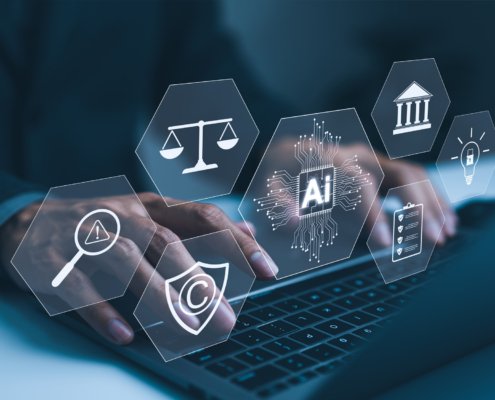 https://firstclassconnection.net/wp-content/uploads/2025/04/Cybersecurity-System-warning-hacked-alert.jpg
1250
2000
Nancy Shed
/wp-content/uploads/2024/04/FirstClassConnection-Logo.svg
Nancy Shed2025-04-24 09:49:572025-05-07 11:18:33How to Evaluate XDR Solutions and the Features That Matter Most
https://firstclassconnection.net/wp-content/uploads/2025/04/Cybersecurity-System-warning-hacked-alert.jpg
1250
2000
Nancy Shed
/wp-content/uploads/2024/04/FirstClassConnection-Logo.svg
Nancy Shed2025-04-24 09:49:572025-05-07 11:18:33How to Evaluate XDR Solutions and the Features That Matter MostIT Disaster Recovery: What You Need to Know
One of the worst things that can happen to a company is losing valuable information, and unfortunately, it happens far too often. Accidents, cyberattacks, and natural disasters are the leading causes of IT disasters. Even with precautions, these things cannot always be avoided—however, the loss of vital data can.
With IT disaster recovery, no amount of damage can completely erase your essential company information. But what exactly is it?
Read on to learn more about IT disaster recovery, including:
- What is IT disaster recovery?
- How important is IT disaster recovery?
- The benefits of IT disaster recovery
- What is needed to create an IT disaster recovery plan
What Is IT Disaster Recovery?
IT disaster recovery is essentially a way for businesses to recover any vital information or software that may have been stolen, corrupted, or deleted because of hacking, ransomware attacks, storm damage, or an accident. This is typically done in one of two ways: data centers and the cloud.
When utilizing data center procedures, everything a company deems irreplaceable is copied and sent to a data center. After disasters, backups can be retrieved, duplicated, and used by the company as needed. However, this approach can be costly, as it reproduces a company’s entire IT library of software, hardware, documents, and more. Recreating and uploading massive amounts of data is expensive but necessary.
The second approach involves using the cloud. With this, all information is easily uploaded and retrieved when needed. Using the cloud is often the more affordable option and is easier to access. However, the actions required to get your internal operations up and running again can be just as tedious—still, having the option to recover your data after a disaster is invaluable.
How Important is IT Disaster Recovery?
IT disaster recovery isn’t important; it’s essential.
Today, nearly every piece of important information is stored in a digital form. Regaining damaged or lost data is a crucial tool for companies to have in their back pocket. Because data loss can happen at any time for several reasons, having a plan to prevent the loss of important information is the only way to ensure your company won’t spontaneously implode.
Without a way to protect your organization, operations could come to a complete halt if it suffered severe data loss. Many employees could not follow their daily routines without the proper hardware or software, customer support options may be ineffective, and precious assets could be tampered with. Businesses must take advantage of IT disaster recovery in some form, regardless of size or industry.
In the case of cyberattacks, customer or company information could be stolen and used maliciously, leading to financial loss, lawsuits, and negative customer perception.
As the digital age advances, so does the number of cyberattacks. These can be detrimental to growing and established businesses alike. Learn more about how to prevent them from hurting your business.
The Benefits of IT Disaster Recovery
The benefits of IT disaster recovery cannot be overstated. Many of the related pros are apparent, but others could be overlooked. Nonetheless, all of them positively impact your business. They include, but are not limited to:
- Saves time: One of the most tremendous benefits of disaster recovery is the amount of time it saves. A recovery plan drastically decreases the time it takes to get operations back up and running.
- Reduces costs: Completely recreating software and vital information could be astronomical and would likely ruin many businesses without a proper recovery plan. Investing in disaster recovery is easily worthwhile, as it can prevent lost revenue, save on the cost of rebooting systems, and prevent potential lawsuits.
- Prevents productivity loss: The time between a disaster and being back on track can result in incredibly low productivity. Without the proper software, hardware, and crucial information, many employees would be left without the means to efficiently do their jobs. With a solid recovery plan, the ball never has to stop rolling.
- Protects company perception: When a business suffers a massive data breach, its reputation can be impacted as well. Most customers and companies are weary about using a service or partnering with a business that could potentially lose their information—or can’t protect their own. This leads to irreversible damage and impacts future profits. Using disaster recovery can help maintain your professional status.
What Is Needed to Create an IT Disaster Recovery Plan
You can’t create backups with an IT disaster recovery plan if you don’t know what needs to be protected and how to do so—and figuring it out takes a lot of work. You need to understand how many servers are required to efficiently back up massive amounts of data, as well as what that data is going to be used for and what is worth backing up. It’s also worth considering whether or not you work in an area prone to natural disasters.
Creating a recovery plan requires a team of professionals that know what they’re doing. They monitor, update, and plan anything related to disaster recovery. They calculate how long estimated recovery times should take, how much data your company can afford to lose after a disaster—the recovery point objective—and potential budgets.
Let First Class Connection’s IT Disaster Recovery Services Help
However, staffing your own IT team can be costly and requires the need for an entire department. If that sounds like a hassle, you might be better off utilizing disaster recovery services. Hiring a service to provide IT disaster recovery management can take a massive weight off your company’s shoulders. Additionally, the cost of hiring a professional recovery often reduces your spending by cutting the need for an internal team—all while providing excellent results.
First Class Connection can construct the perfect disaster recovery strategy for your business. With our team’s experience in monitoring network security and performing regular data backups via our cloud servers, you can rest easy knowing your company information is safe and ready at a moment’s notice.
Related Postings
 https://firstclassconnection.net/wp-content/uploads/2025/04/Cybersecurity-System-warning-hacked-alert.jpg
1250
2000
Nancy Shed
/wp-content/uploads/2024/04/FirstClassConnection-Logo.svg
Nancy Shed2025-04-24 09:49:572025-05-07 11:18:33How to Evaluate XDR Solutions and the Features That Matter Most
https://firstclassconnection.net/wp-content/uploads/2025/04/Cybersecurity-System-warning-hacked-alert.jpg
1250
2000
Nancy Shed
/wp-content/uploads/2024/04/FirstClassConnection-Logo.svg
Nancy Shed2025-04-24 09:49:572025-05-07 11:18:33How to Evaluate XDR Solutions and the Features That Matter Most https://firstclassconnection.net/wp-content/uploads/2025/04/What-Is-Extended-Detection-and-Response-XDR.jpg
1250
2000
Nancy Shed
/wp-content/uploads/2024/04/FirstClassConnection-Logo.svg
Nancy Shed2025-04-21 14:43:392025-05-07 11:18:33What Is Extended Detection and Response (XDR)?
https://firstclassconnection.net/wp-content/uploads/2025/04/What-Is-Extended-Detection-and-Response-XDR.jpg
1250
2000
Nancy Shed
/wp-content/uploads/2024/04/FirstClassConnection-Logo.svg
Nancy Shed2025-04-21 14:43:392025-05-07 11:18:33What Is Extended Detection and Response (XDR)? https://firstclassconnection.net/wp-content/uploads/2025/03/How-AI-in-Cybersecurity-is-Revolutionizing-Detection-and-Response.jpg
1250
2000
Nancy Shed
/wp-content/uploads/2024/04/FirstClassConnection-Logo.svg
Nancy Shed2025-03-27 12:09:182025-05-07 11:18:33How AI in Cybersecurity is Revolutionizing Detection and Response
https://firstclassconnection.net/wp-content/uploads/2025/03/How-AI-in-Cybersecurity-is-Revolutionizing-Detection-and-Response.jpg
1250
2000
Nancy Shed
/wp-content/uploads/2024/04/FirstClassConnection-Logo.svg
Nancy Shed2025-03-27 12:09:182025-05-07 11:18:33How AI in Cybersecurity is Revolutionizing Detection and Response